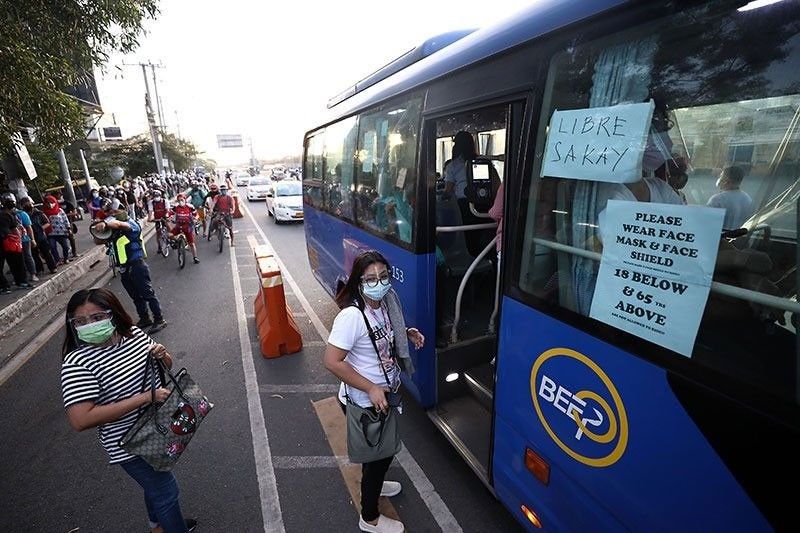Transit Advertising Philippines for Unmatched Brand Name Exposure
Wiki Article
A Detailed Evaluation of the Strategies and Methods for Successful Transit Advertising Campaigns
Transportation ad campaign provide an unique possibility for brands to engage with varied audiences in dynamic atmospheres. To achieve success, it is important to understand the nuances of target demographics, apply ingenious design techniques, and choose ideal placement areas. In addition, the performance of these projects can be dramatically improved by very closely keeping an eye on efficiency metrics and adjusting techniques accordingly. As we check out these important parts, it comes to be clear that the path to an impactful transit marketing approach is both fulfilling and intricate, raising the concern of how best to navigate these complexities for optimal brand visibility.Understanding Target Demographics
Recognizing target demographics is important for the success of transportation ad campaign (Transit Advertising Philippines). Identifying specific audience segments makes it possible for advertisers to tailor their messages efficiently, ensuring that the web content reverberates with the designated customers. This technique boosts engagement and makes best use of return on financial investmentTo successfully assess target demographics, marketing professionals have to think about several essential elements, including age, revenue line of work, level, and lifestyle preferences. For example, a project targeted at young professionals may concentrate on convenience and modernity, while one targeting households may highlight safety and dependability. Furthermore, geographic factors such as rural versus urban settings can significantly influence consumer behavior and preferences.
Information collection techniques such as studies, focus groups, and social networks analytics provide useful understandings right into market trends and customer behaviors. By leveraging this details, marketers can craft compelling stories that straighten with the worths and requirements of their target market.
Ultimately, comprehending target demographics not only informs the strategic direction of transit advertising projects yet also ensures that resources are allocated successfully. This targeted strategy raises the chance of attaining campaign purposes, promoting brand name loyalty, and driving conversions.
Imaginative Style Techniques
Reliable communication with target demographics depends greatly on cutting-edge imaginative design strategies in transportation advertising campaigns. To properly capture attention in a congested aesthetic environment, designers need to focus on clearness and aesthetic impact. Using high-contrast elements and vibrant shades can boost presence, making sure that messages are easily legible from a distance.Incorporating vibrant imagery that reverberates with the target audience is critical. Visual storytelling techniques can stimulate feelings and create memorable organizations with the brand. Furthermore, critical use of typography aids convey necessary details quickly; suitable dimensions and readable font styles even more enhance readability.
Incorporating interactive elements, such as QR codes or enhanced fact features, can engage travelers past passive observation (Transit Advertising Philippines). These techniques not only advertise user communication but also connect the gap between traditional advertising and digital involvement
Additionally, using area creatively-- whether on bus covers, transportation sanctuaries, or metro advertisements-- can bring about innovative formats that break the mold and mildew of standard advertising. By accepting imaginative creativity while keeping brand name uniformity, projects can foster a strong connection with their target market, eventually driving both understanding and action. The combination of these layout strategies is extremely important for attaining effective transit advertising end results.
Strategic Positioning Techniques
Maximizing the influence of transit marketing pivots on strategic positioning approaches that ensure optimum exposure and involvement. Effective positioning includes assessing high-traffic locations and understanding traveler demographics to identify one of the most useful places for ad display screens. For instance, positioning ads near entries and departures of transportation cars can capture the attention of boarding and touching down passengers, hence improving exposure.Additionally, utilizing both indoor and exterior surface areas of transportation vehicles can substantially broaden reach. Outside ads, visible throughout commutes, involve pedestrians and various other motorists, while indoor ads target passengers in view a restricted environment. Furthermore, positioning advertisements in transit centers, such as bus terminals or train stations, permits raised impressions as travelers transition between different settings of transportation.
Timing is additionally important; aligning the project launch with peak travel durations optimizes audience engagement - Transit Advertising Philippines. In addition, leveraging digital screens en route atmospheres can assist in dynamic web content, improving and supplying real-time updates customer interaction. By employing these tactical placement approaches, marketing professionals can make sure that their transit ad campaign accomplish maximum exposure, resonate with the target audience, and eventually drive wanted end results

Determining Campaign Efficiency
To evaluate the success of transit these details ad campaign, it is important to utilize a range of measurement techniques that offer insights into target market involvement and overall performance. One key approach is using essential efficiency signs (KPIs), such as reach, perceptions, and interaction rates, which evaluate just how several people saw the advertisement and interacted with it.Studies and focus teams can likewise contribute in gauging customer understandings and recall, permitting marketers to recognize the effect of their messaging. Additionally, tracking website web traffic and social media sites involvement during and after the campaign aids determine direct reactions to the marketing.
An additional effective technique is using location-based analytics, which can offer information on foot web traffic around certain transit areas, providing insights right into whether the project efficiently caught the attention of commuters. Additionally, assessing sales information can reveal connections between transportation advertising and boosted revenue, giving tangible proof of a campaign's performance.
Study of Success
Comprehending the effectiveness of transit ad campaign through measurement strategies lays the foundation for examining real-world instances that highlight successful outcomes. One significant study includes a nationwide drink brand that used bus covers in urban locations. The project aimed to enhance brand name exposure and sales throughout the summer months. By utilizing geo-targeted electronic advertisements and analytics, the brand name determined a 30% increase in sales in regions where the covers were prominently displayed, showing the direct influence of transit marketing.An additional compelling example comes from a local not-for-profit company that released a project on metro systems to promote a neighborhood occasion. The use of direct involvement through modern technology amplified the project's reach and effectiveness.

Conclusion
In summary, effective transportation advertising projects demand a comprehensive technique that integrates an understanding of target demographics, cutting-edge style strategies, and calculated placement. Jointly, these methods foster brand name presence and optimize the return on financial investment in transit advertising campaigns.Understanding target demographics is vital for the success of transit advertising and marketing campaigns.Reliable interaction with target demographics counts heavily on cutting-edge creative layout techniques in transit advertising and marketing projects. By employing these strategic positioning techniques, marketing experts can guarantee that their transit advertising and marketing campaigns accomplish optimal presence, resonate with the target audience, and eventually drive preferred results.
Comprehending the effectiveness of transportation advertising and marketing campaigns with measurement strategies lays the groundwork for checking out real-world examples that highlight successful end results.In summary, successful transportation advertising and marketing campaigns require an extensive method that incorporates an understanding of target demographics, ingenious layout strategies, and calculated placement.
Report this wiki page